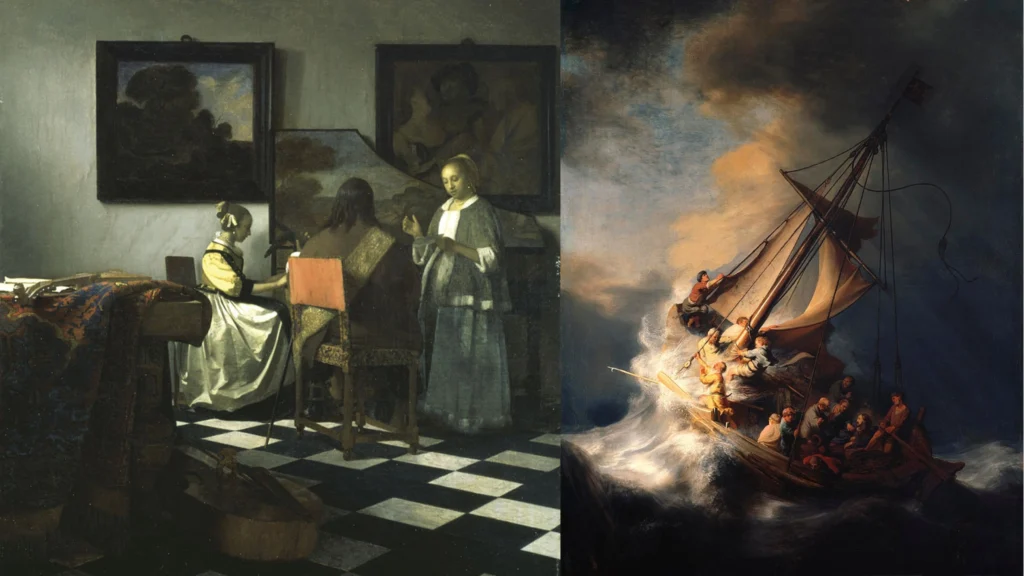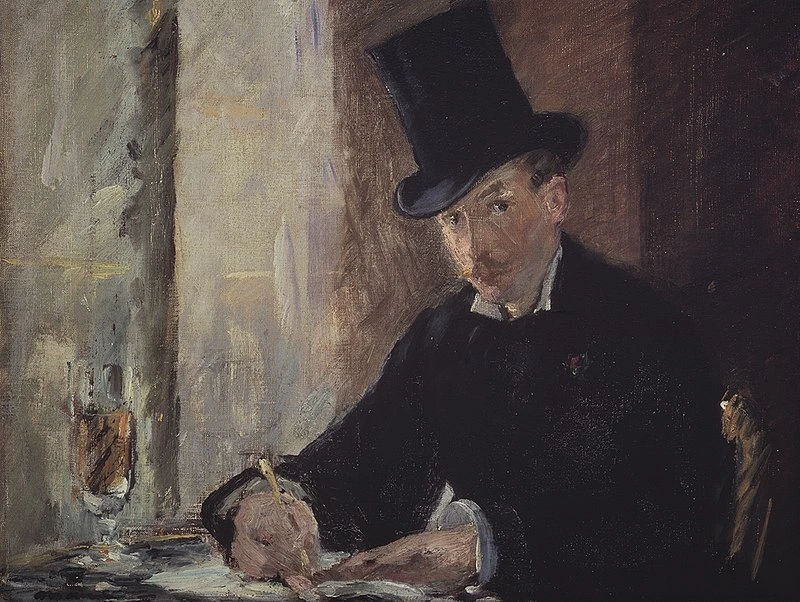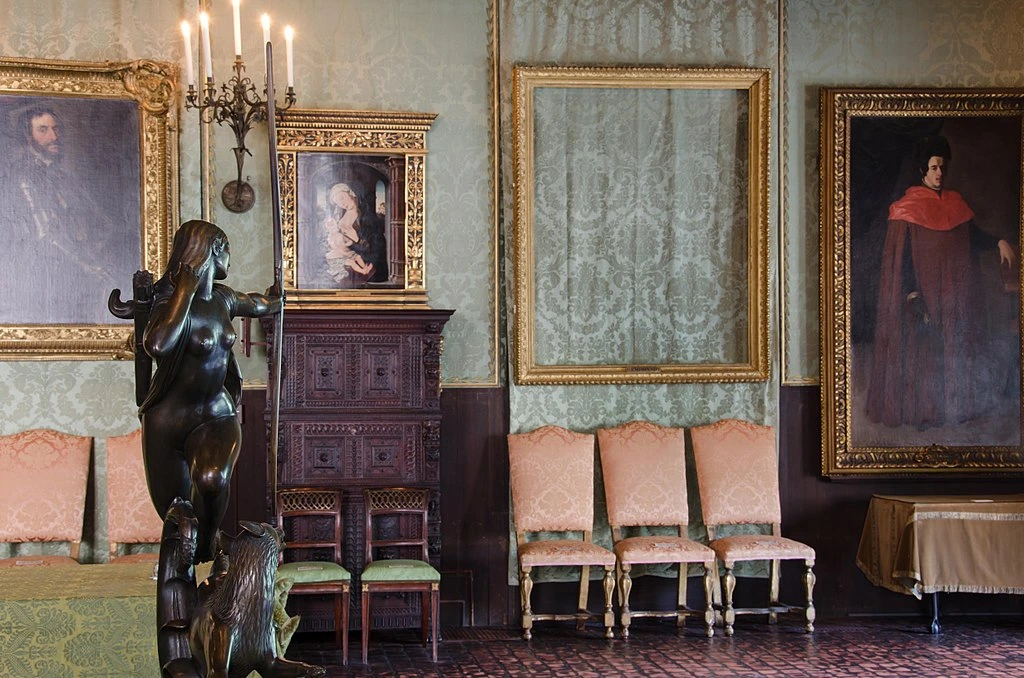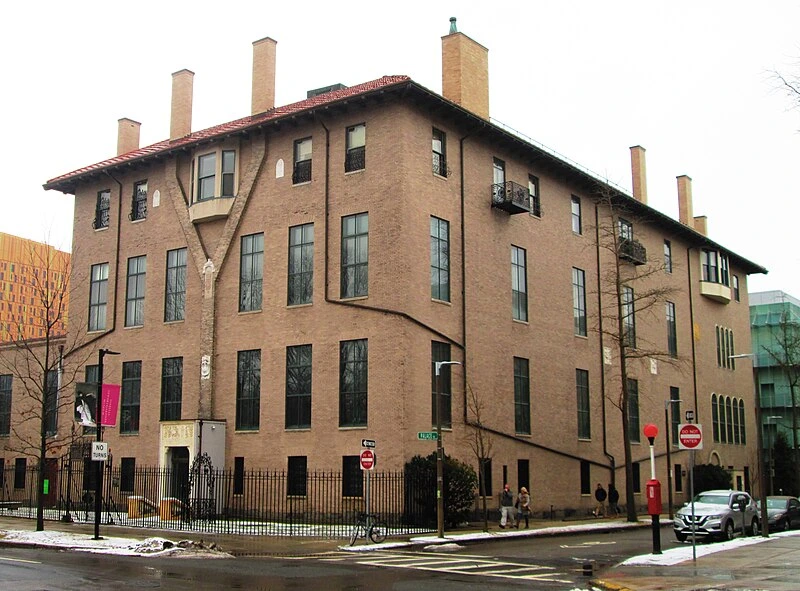In the early hours of March 18, 1990, something crazy happened in Boston. Two men, dressed as policemen, walked into the Isabella Stewart Gardner Museum and stole 13 pieces of artwork.
These weren’t just any paintings. They included masterpieces by Vermeer, Rembrandt, Degas and Manet. The FBI says the stolen art is worth hundreds of millions of dollars.
To this day, no one has been arrested and none of the artwork has been recovered. The museum is even offering a $10 million reward. The biggest reward ever offered by a private organization for information that leads to getting the art back.
A Museum Built to Last
Isabella Stewart Gardner, born in 1840, was a famous art collector. She built her museum to show off her personal collection. Gardner personally arranged all the artwork and when she died in 1924, she left money for the museum but made it clear that nothing could ever be moved or sold.
The museum opened to the public in 1903 and was considered a real gem in Boston.
By the 1980s, the museum was running low on money. It didn’t have an insurance policy and some of its building systems were outdated. Security was added after a 1982 plot by criminals was discovered, including infrared motion sensors and a few cameras outside.
Inside cameras weren’t added because the board didn’t want to spend money. Guards were paid just above minimum wage and the security system had some gaps.
The Night of the Heist

It was a Sunday night, and two guards, Rick Abath, 23, and Randy Hestand, 25, were on duty. Hestand was new to the night shift. Around 1:20 a.m., the two men posing as policemen rang the museum’s side door buzzer.
Abath saw them on the security monitor and let them in, thinking they were responding to some disturbance.
Once inside, the men showed their true colors. They handcuffed Abath and Hestand, wrapped tape around their eyes and led them to the basement.
The guards were tied to pipes and workbenches. The thieves even threatened them, saying they knew where they lived and hinting they could claim a reward a year later if the guards kept quiet. It took the men less than 15 minutes to control the guards.
Stealing the Masterpieces

The robbery lasted 81 minutes. The thieves moved carefully through the museum. The Dutch Room, home to the most valuable works, was their first stop.
Here they took The Storm on the Sea of Galilee by Rembrandt, his only seascape and The Concert by Vermeer, one of only 34 known Vermeers in the world. They also stole a Rembrandt self-portrait etching, A Lady and Gentleman in Black by Rembrandt and Landscape with Obelisk by Govert Flinck.
Surprisingly, they also took an ancient Chinese gu, a small bronze wine container.
Next, they went to the Short Gallery, stealing five sketches by Edgar Degas and a French Imperial Eagle finial from a Napoleonic flag. Their last stop was the Blue Room, where they took Chez Tortoni by Manet.
Oddly, they left other highly valuable works untouched, like pieces by Raphael, Botticelli, Michelangelo and Titian. Experts say this makes it seem like the thieves weren’t art experts.
Before leaving, the thieves even took video cassettes from the security cameras but left the hard drive. They opened the side doors at 2:40 a.m. and 2:45 a.m., disappearing into the night.
The Stolen Art

The FBI estimated the theft at $200 million in 1990, later raising the number to $500 million. Some art dealers say the total could be $600 million. The Concert alone could be worth $250 million. The Storm on the Sea of Galilee is valued at about $140 million.
The rest of the stolen works—Rembrandt etching, Flinck painting, Degas sketches, Manet’s Chez Tortoni, the gu and the eagle finial—are all priceless in their own way.
The museum still keeps empty frames hanging where the art was taken, following Isabella Gardner’s will.
Who Might Have Done It?
Right after the robbery, the FBI started investigating. The case is strange because there’s little physical evidence. Fingerprints and footprints were found but couldn’t be tied to anyone. Over the years, the FBI has used interrogations, undercover informants and sting operations to track down suspects.
One focus was the Boston Mafia. At the time, the gang was in the middle of a violent internal war. Bobby Donati, a known gangster, may have organized the heist to help a fellow mobster get out of prison. Donati’s life was taken in 1991, so if he had the paintings, he never got a chance to negotiate.
Other suspects included members of the Merlino gang, like Robert Guarente and Robert Gentile. Guarente died in 2004 and his widow claimed he gave some of the paintings to Gentile for safekeeping.
Gentile denied having them but a polygraph suggested he might have been lying. David Turner, another gang associate, was also suspected but he denied involvement. Many of these suspects are now dead.
Whitey Bulger, Boston’s infamous crime boss, denied involvement. Some think he may have even tried to find the thieves to claim tribute, since it happened in his territory.
Letters, Tips and False Leads
In 1994, the museum got an anonymous letter claiming to know the paintings’ location. The writer said the art was being held in a “non-common law country” and asked for $2.6 million in exchange for a return. The museum and FBI tried to negotiate but the person disappeared.
A man named Myles J. Connor Jr., a well-known art thief, told authorities he believed Bobby Donati and David Houghton organized the robbery. Another figure, William P. Youngworth, claimed he could return the art under certain conditions but nothing came of it. Some paint chips he gave the FBI matched the 17th century but didn’t prove the stolen paintings were real.
Where Are the Paintings Now?

No one knows for sure. The FBI has said that the thieves are likely dead. Some think the art may have been moved to Connecticut, Philadelphia or even overseas.
Others suggest pieces might have been destroyed or badly damaged after being rolled up. The eclectic selection of items—some highly valuable, some seemingly worthless—makes it hard to tell what the thieves’ plan was.
The museum continues to offer a $10 million reward for information that leads to recovery. They’ve promised that anyone returning the pieces will not face prosecution. The statute of limitations for the theft itself expired in 1995, so the criminals, if still alive, can’t be charged.
The Isabella Stewart Gardner Museum heist is one of the most famous art thefts in history. It’s been over 30 years, and still no one knows exactly what happened to the 13 stolen works.



